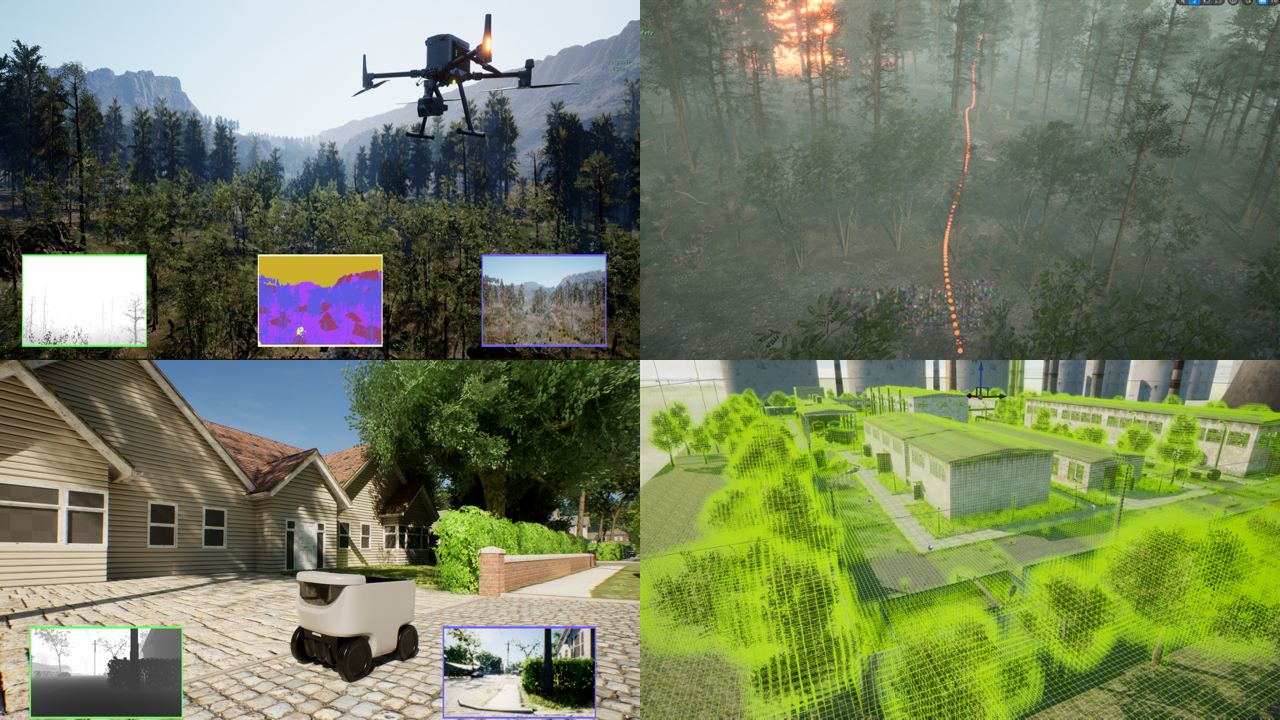 To increase the ease of development, a Python API is integrated with GRID to allow for seamless development while also being exposed to allow the user full control over the simulation environment and robotic agents from GRID.
In this section we will cover the key features of Airgen as well as document the API.
To increase the ease of development, a Python API is integrated with GRID to allow for seamless development while also being exposed to allow the user full control over the simulation environment and robotic agents from GRID.
In this section we will cover the key features of Airgen as well as document the API.
The client described in Robots is fundamental to interacting with the airgen simulation; it is highly recommended to read this page first
Key Features
- Unreal Engine 5 Ready: AirGen is built on top of Unreal Engine 5, enabling you to leverage the latest features in Unreal Engine such as Nanite, Lumen, and more.
- Geospecific Environment Support: Dive into real-world terrains and photorealistic tilesets with AirGen’s support for geospecific environments powered by the Cesium platform. Experience a seamless blend of the virtual and real world, delivering unparalleled experiences for your simulation needs.
- Advanced Path / Trajectory Planning: Leveraging features such as occupancy maps, signed distance fields, path planning algorithms, and minimum snap trajectory generation, AirGen enables generating optimal and collision-free trajectories at scale.
- Large-Scale Data Collection: AirGen’s support for large-scale data collection allows you to collect virtually infinite amounts of photorealistic multimodal data, unlocking the training of generalizable perception-action models.
- Digital Twin Import: AirGen supports importing meshes or scenes at runtime, enabling you to simulate real-world context within the simulation.

